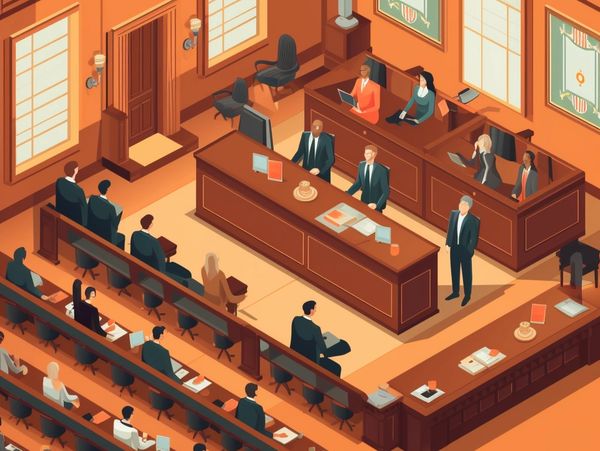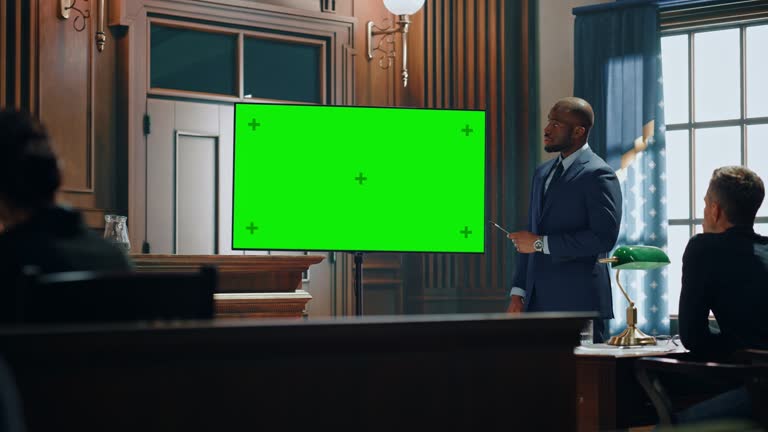Navigating the Intricacies of Test Presentations: Tips for Seamless Distribution and Engaging Debates
In the realm of lawful proceedings, the art of trial discussion stands as a critical determinant of success. As lawyers browse the elaborate web of courtroom dynamics, the ability to effortlessly provide debates and evidence while mesmerizing the court's interest comes to be paramount. The intricacies inherent in trial discussions call for a delicate equilibrium of skill, approach, and skill. By developing strategies that make certain a polished shipment and crafting engaging debates that reverberate with the audience, lawyers can dramatically boost their advocacy. In a world where persuasion preponderates, grasping the ins and outs of test discussions is not just an option but a necessity for those seeking to prevail in the court.

Comprehending Test Purposes
To properly navigate a trial, it is important to have a clear understanding of the goals that require to be attained. Before stepping into the court, legal teams need to specify their objectives and desired outcomes. These goals serve as assisting concepts throughout the test, forming methods and affecting decision-making procedures.
Recognizing test purposes entails a thorough evaluation of the instance, lawful criteria, and the client's finest rate of interests. Trial Presentations. It needs a careful assessment of the truths, determining essential problems, and anticipating potential challenges. By establishing details and quantifiable goals, attorneys can tailor their debates and discussions to align with the wanted outcomes
Moreover, a clear understanding of trial purposes makes it possible for legal teams to prioritize evidence, witnesses, and lawful debates successfully. It enables the development of a systematic story that resonates with the judge and court, reinforcing the general case discussion.

Organizing Proof Properly
Having a clear understanding of trial purposes lays the foundation for arranging evidence properly in legal process. By straightening the presentation of proof with the desired results of the trial, lawful groups can enhance their debates and improve their persuasiveness.
An additional secret component in organizing proof effectively is developing a logical flow. Offering evidence in a meaningful and consecutive manner can assist construct a compelling story that sustains the legal disagreements being made. In addition, using aesthetic help such as timelines, charts, or graphs can further improve the company of proof and assist in clearing up intricate relationships or sequences of occasions.
In addition, guaranteeing that all proof presented is acceptable and appropriate to the case is vital. Unnecessary or inadmissible evidence can diminish the stamina of the disagreement and possibly damage the credibility of the here and now celebration. A precise evaluation and choice process ought to be carried out to include only the most impactful and legally audio proof in the test discussion.
Crafting Convincing Narratives
Crafting compelling stories plays a critical duty in providing influential disagreements throughout legal process. When building a story for a trial discussion, it is vital to establish a clear storyline that highlights key points and attaches them in a meaningful fashion. By weaving together proof, testimony, and lawful debates into a convincing and natural narrative, lawful professionals can successfully advocate for their clients and raise the possibility of a desirable outcome in the court.
Mastering Visual Help
Effective use of aesthetic help is essential to boosting the influence and clarity of trial discussions. Aesthetic aids, when utilized tactically, have the power to streamline intricate information, strengthen bottom this lines, and leave a lasting impression on the judge and court. To understand aesthetic help in trial presentations, it is important to make certain that they are clear, succinct, and relevant to the arguments being made.
When integrating aesthetic help, such as graphes, graphs, photos, or timelines, into a trial presentation, it is vital to more helpful hints maintain them aesthetically appealing yet professional. The visuals should complement the verbal arguments, providing a graph of the information being discussed without overwhelming the target market with unneeded information.
In addition, exercising with the aesthetic help ahead of time is essential to make certain a smooth distribution throughout the trial. Familiarizing oneself with the content, transitions, and timings of each aesthetic help can assist preserve the flow of the discussion and protect against technological glitches that may arise.
Delivering Impactful Closing Debates
A compelling closing debate serves as the end result of a trial discussion, encapsulating the core narrative and encouraging the judge and court towards a positive decision. Begin by detailing the major disagreements that sustain your client's position, highlighting why the proof presented throughout the test sustains your narrative.
In addition, incorporating emotional appeal can additionally enhance your closing argument. By humanizing the case and linking on a personal level with the decision-makers, you can evoke compassion and understanding, influencing their perception of the realities provided. In addition, stating the lawful criteria that should be satisfied for a desirable ruling can reinforce the legitimacy of your placement. Inevitably, a well-crafted closing argument need to leave an enduring impact, engaging the discretionary to rule in your customer's favor.
Verdict
Finally, understanding test presentations entails recognizing goals, organizing proof, crafting stories, making use of aesthetic help, and providing impactful closing arguments. By applying these methods efficiently, lawyers can present their instance effortlessly and make compelling arguments in the court. It is critical to navigate the complexities of trial presentations with accuracy and ability to achieve success in lawful process.
By aligning the discussion of proof with the preferred results of the trial, lawful groups can reinforce their debates and improve their persuasiveness (Trial Presentations). To grasp visual help in trial presentations, it is essential to make certain that they are clear, succinct, and relevant to the arguments being made
An engaging closing argument serves as the end result of a trial presentation, encapsulating the core narrative and persuading the judge and court in the direction of a desirable decision. Begin by describing the major disagreements that support your customer's placement, highlighting why the proof offered throughout the test supports your narrative.In verdict, mastering trial presentations includes recognizing goals, arranging evidence, crafting stories, using great site aesthetic help, and supplying impactful closing debates.